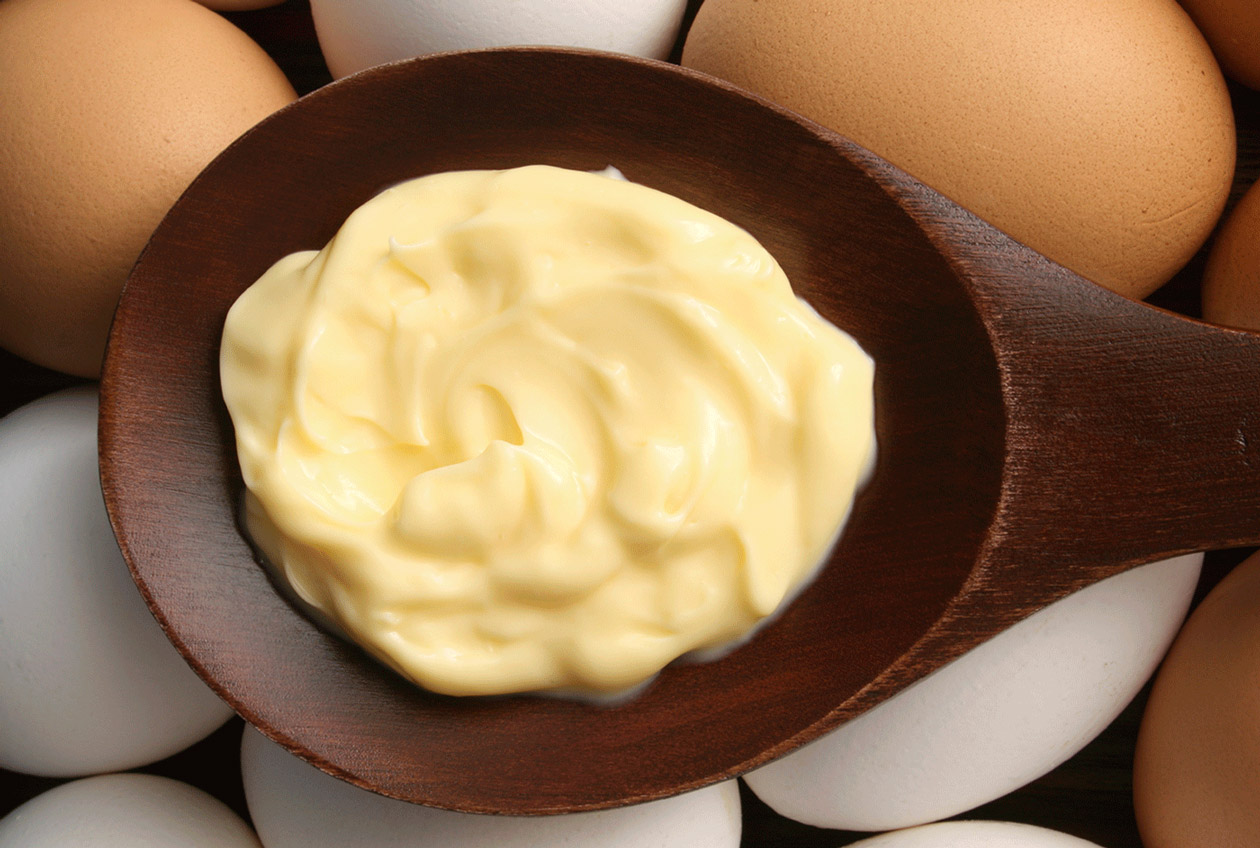Natural emulsions
Emulsions have long since been one of our favourite kinds of food. They are a blend of two liquids that would normally not mix together. Two great classics of our culinary heritage illustrate this perfectly.
It is not easy to mix liquids that are not attracted to each other. Animal fats and vegetable oils are both hydrophobic. If we mix oil with water, the two liquids end up separating. Yet they can be bound by adding surfactant molecules, which act as ‘binding agents’ and position themselves between the two non-miscible elements. They prevent oil and water from separating.
By mixing non-miscible liquids, we can create the emulsions that we enjoy eating every day. There are two types of emulsions:
- Oil-in-water emulsion where the oil droplets are dispersed in the water.
When we make mayonnaise, we use the surfactant lecithin, contained in egg yolk, to stabilise the oil droplets in the water. The more we beat this emulsion, the more the oil droplets are divided and the thicker the sauce becomes. The surfactants in a single egg yolk are enough to prepare several litres of mayonnaise with an ample amount of water.
When making a Provence-style aioli (garlic sauce), the phospholipids (lipids bound to phosphoric acid) present in garlic stabilise the oil droplets.
- Water-in-oil emulsion where, in contrast to the previous emulsion, it is the water droplets that are dispersed in the fat.
Butter is a water-in-oil emulsion. The fatty substance contains around 20% water.












